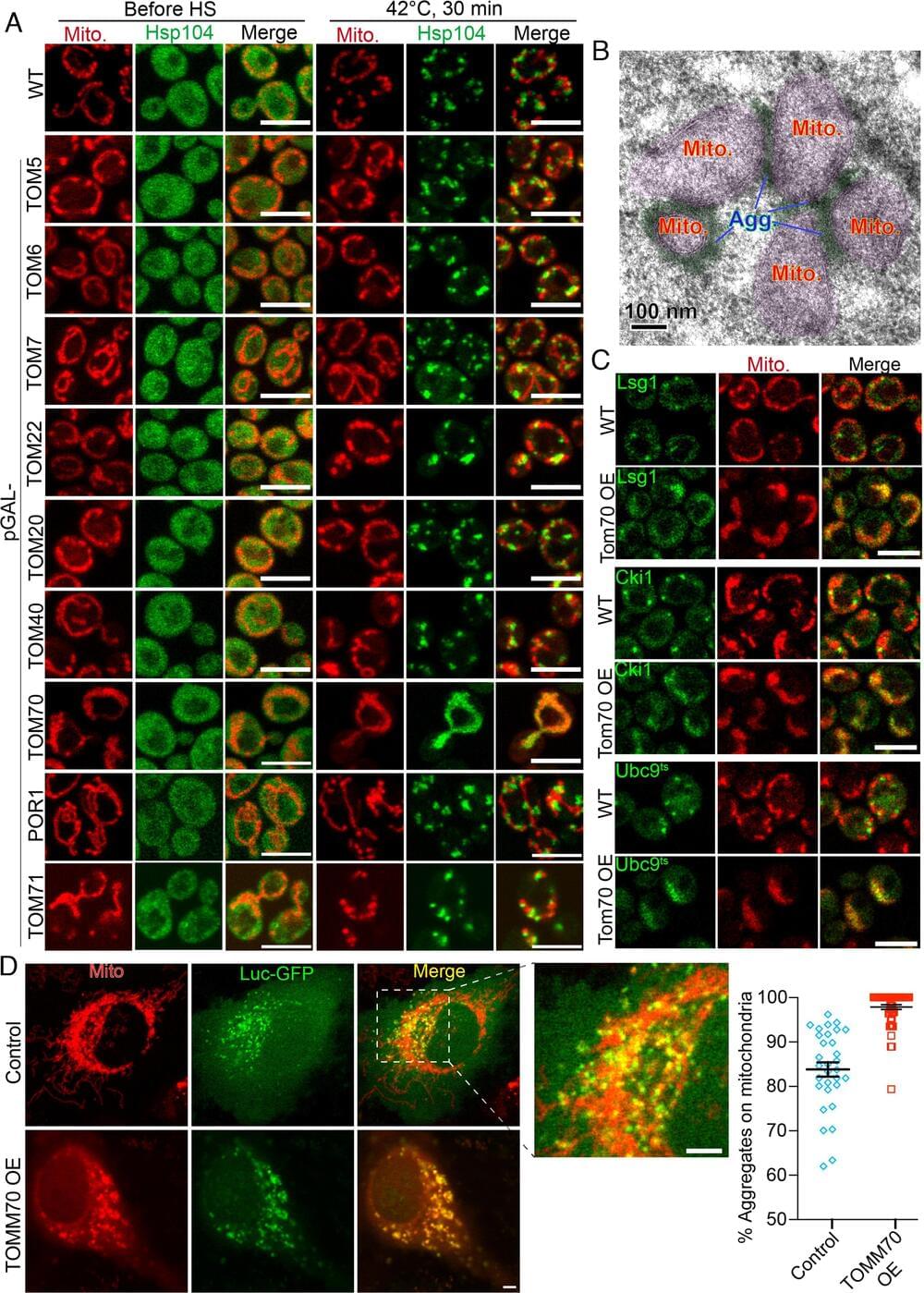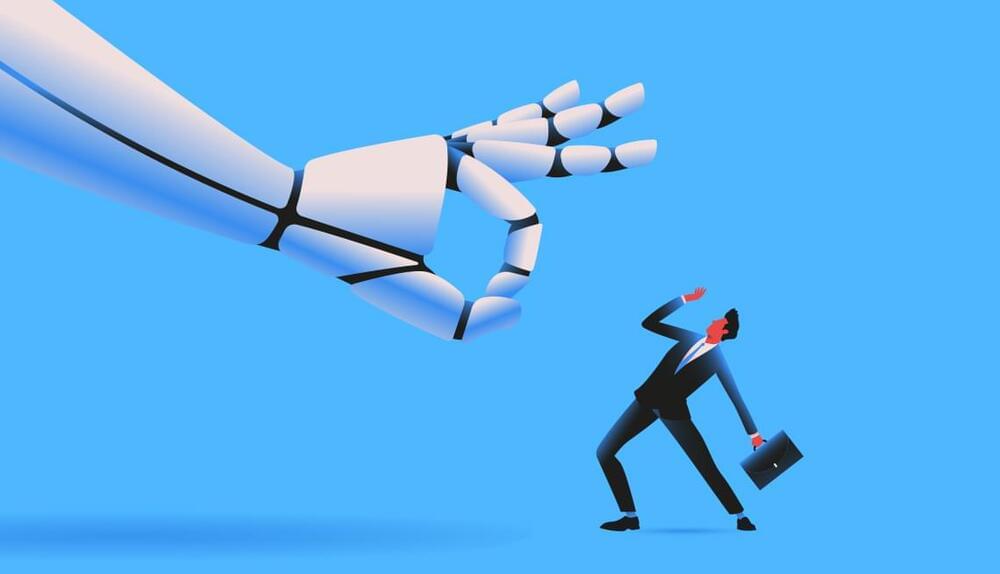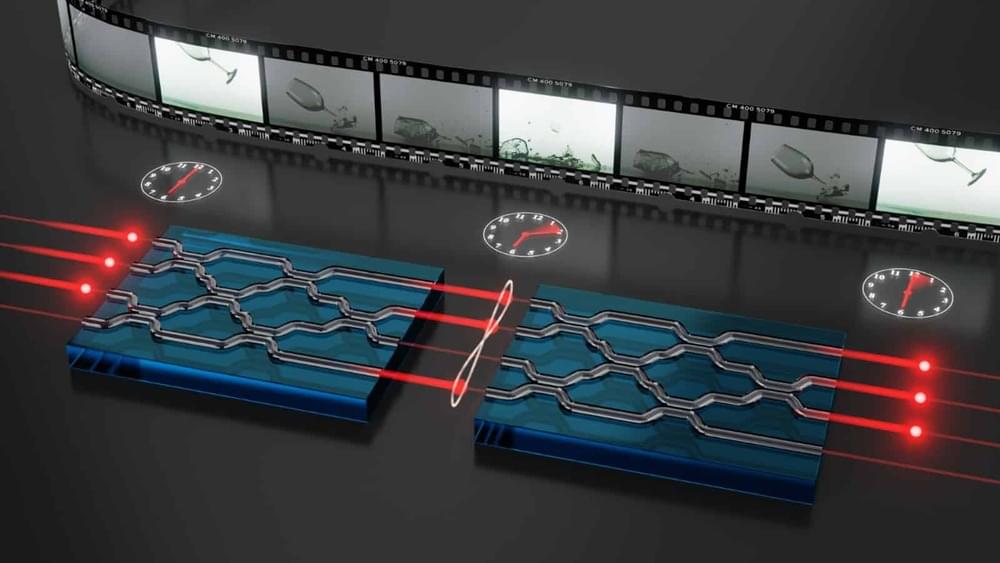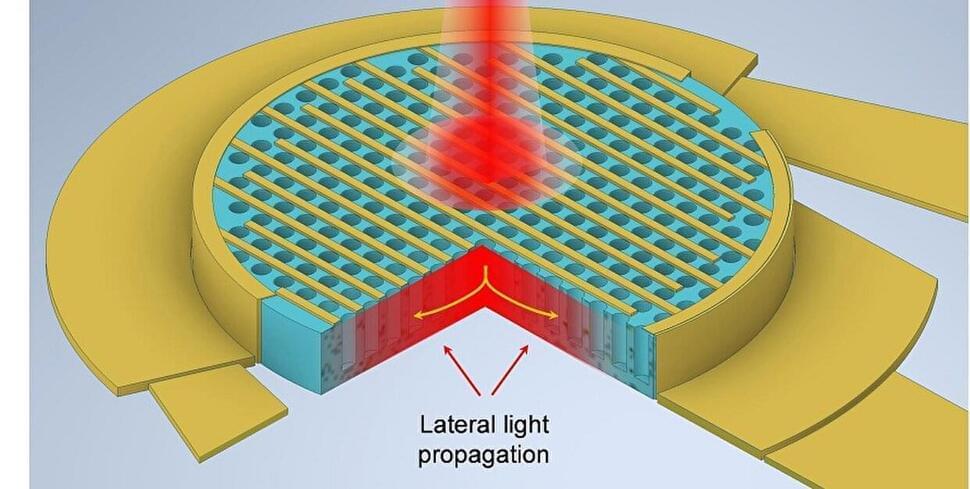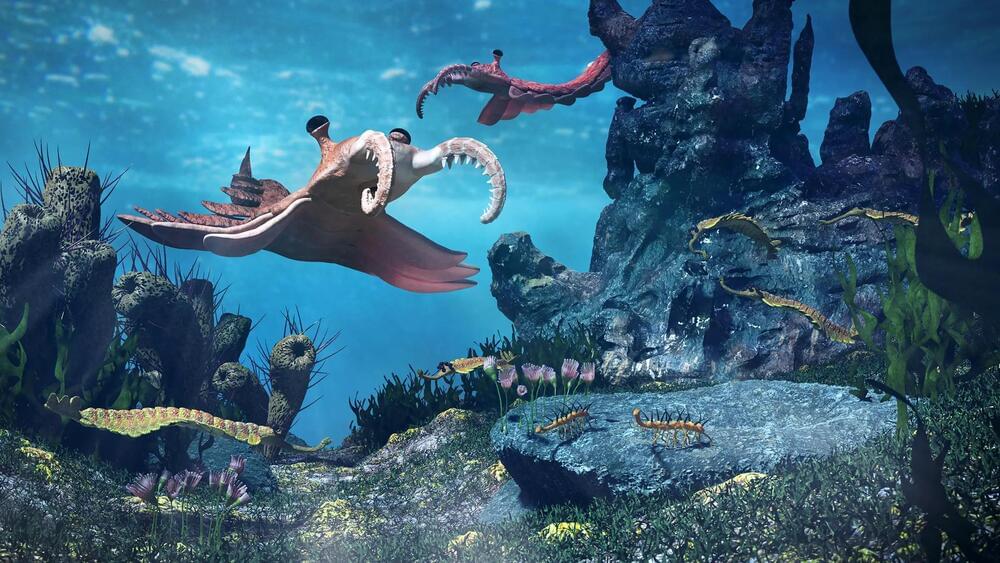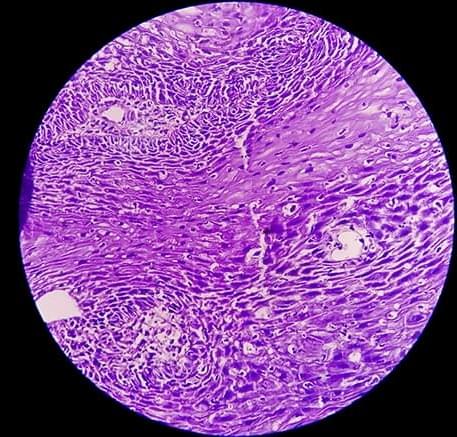Eukaryotes organize cellular contents into membrane-bound organelles and membrane-less condensates, for example, protein aggregates. An unsolved question is why the ubiquitously distributed proteins throughout the cytosol give rise to spatially localized protein aggregates on the organellar surface, like mitochondria. We report that the mitochondrial import receptor Tom70 is involved in the localized condensation of protein aggregates in budding yeast and human cells. This is because misfolded cytosolic proteins do not autonomously aggregate in vivo; instead, they are recruited to the condensation sites initiated by Tom70’s substrates (nascent mitochondrial proteins) on the organellar membrane using multivalent hydrophobic interactions. Knocking out Tom70 partially impairs, while overexpressing Tom70 increases the formation and association between cytosolic protein aggregates and mitochondria. In addition, ectopic targeting Tom70 and its substrates to the vacuole surface is able to redirect the localized aggregation from mitochondria to the vacuolar surface. Although other redundant mechanisms may exist, this nascent mitochondrial proteins-based initiation of protein aggregation likely explains the localized condensation of otherwise ubiquitously distributed molecules on the mitochondria. Disrupting the mitochondrial association of aggregates impairs their asymmetric retention during mitosis and reduces the mitochondrial import of misfolded proteins, suggesting a proteostasis role of the organelle-condensate interactions.
